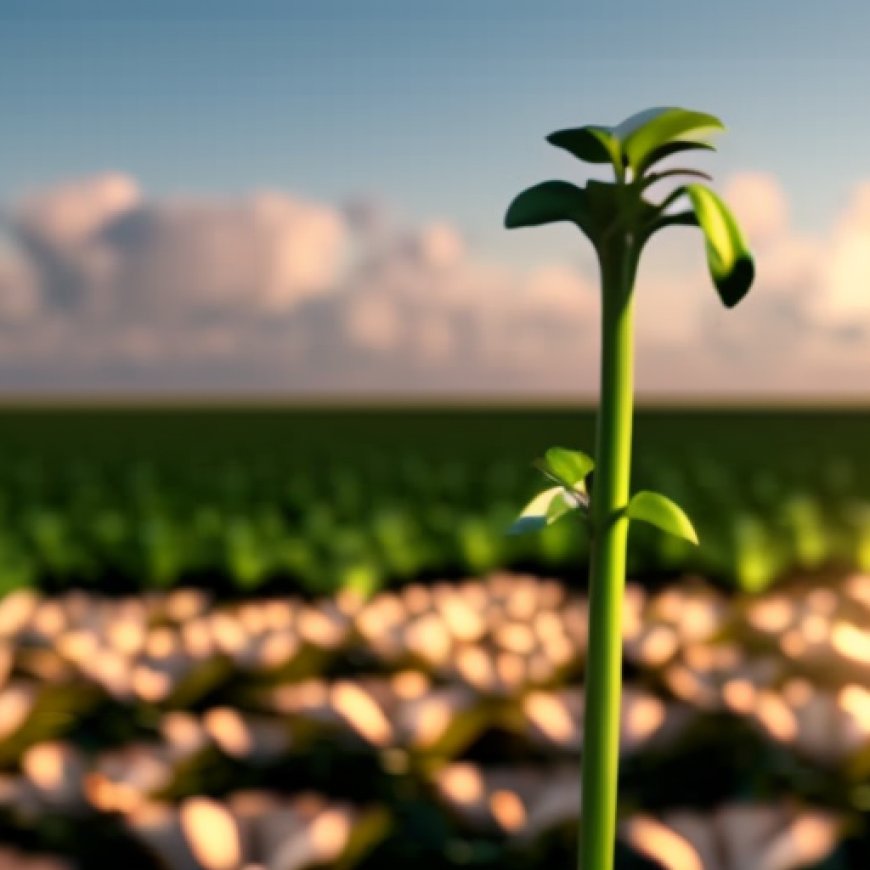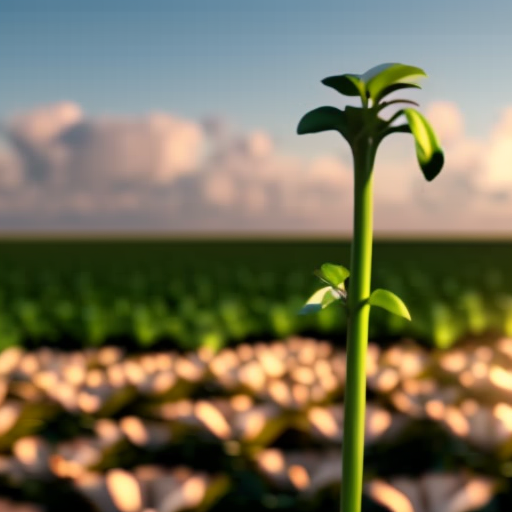Food Security: Delta Keys Into Accelerate Agricultural Development Scheme – News Agency Of Nigeria
Food Security: Delta Keys Into Accelerate Agricultural Development ... News Agency of Nigeria


Delta Government Implements Accelerated Agricultural Development Scheme (AADS)

By Ifeanyi Olannye
Introduction
The Delta Government has embraced the Accelerated Agricultural Development Scheme (AADS) as part of its commitment to achieving food security, sufficiency, and job creation for the youth population. The State Commissioner for Agriculture and Natural Resources, Mr Perez Omoun, made this announcement during an unscheduled visit to the Mbiri Farm Settlement in Ika North East Local Government Area. The purpose of the visit was to inspect ongoing projects that align with the Sustainable Development Goals (SDGs).
Inspection of Projects
The commissioner conducted an inspection of the newly installed water borehole project, which will support the greenhouse project. Additionally, he examined the construction progress of the hostels for participants (Allottees) of the greenhouse and another borehole project for aquaculture at the farm settlement.
Greenhouse Planting and Harvest
Mr Perez Omoun announced that planting in the greenhouses will commence at the end of October, with the first harvest expected by January 2024. He emphasized that the allocation of greenhouses is a crucial step towards achieving the set goals. While awaiting the completion of hostel construction, temporary accommodation has been arranged for the allottees.
Commitment to Agriculture and Food Production
The State Commissioner highlighted the Governor’s commitment to agriculture and food production. As part of this commitment, 30 youths have been allocated a greenhouse each at the Mbiri Farm Settlement. This initiative aims to ensure food security, sufficiency, job creation, and wealth generation in the state. Mr Perez Omoun stated that with the sinking of a borehole, the water problem has been resolved, enabling year-round water supply for food production.
Alignment with SDGs
The project aligns with the Governor’s M.O.R.E Agenda, which emphasizes equal opportunities for all. By engaging youths in agriculture, the state aims to promote sustained peace and security. The fertile land area at the farm settlement can be utilized for multiple agricultural purposes, further contributing to the achievement of SDGs.
Conclusion
The Delta Government’s implementation of the Accelerated Agricultural Development Scheme demonstrates its commitment to achieving food security, sufficiency, and job creation. The ongoing projects at the Mbiri Farm Settlement, including the greenhouse and aquaculture projects, will contribute to these goals. With the support of sustainable practices and the utilization of available resources, Delta State aims to lift people out of poverty and create opportunities for all.
Edited by Isaac Aregbesola
SDGs, Targets, and Indicators Analysis
1. Which SDGs are addressed or connected to the issues highlighted in the article?
- SDG 1: No Poverty – The article mentions that the project aims to lift people out of poverty.
- SDG 2: Zero Hunger – The article focuses on ensuring food security and sufficiency through agricultural development.
- SDG 8: Decent Work and Economic Growth – The article mentions the creation of jobs for youths through the agricultural project.
- SDG 12: Responsible Consumption and Production – The article highlights the goal of producing food for export.
2. What specific targets under those SDGs can be identified based on the article’s content?
- Target 1.2: By 2030, reduce at least by half the proportion of men, women, and children of all ages living in poverty in all its dimensions according to national definitions – The project aims to lift people out of poverty through agricultural development.
- Target 2.3: By 2030, double the agricultural productivity and incomes of small-scale food producers, in particular women, indigenous peoples, family farmers, pastoralists, and fishers – The project aims to increase agricultural productivity and create jobs for youths.
- Target 8.5: By 2030, achieve full and productive employment and decent work for all women and men, including for young people and persons with disabilities, and equal pay for work of equal value – The project aims to create jobs for youths through agricultural development.
- Target 12.3: By 2030, halve per capita global food waste at the retail and consumer levels and reduce food losses along production and supply chains, including post-harvest losses – The project aims to produce food for export, reducing food waste and losses.
3. Are there any indicators mentioned or implied in the article that can be used to measure progress towards the identified targets?
- Indicator 1.2.1: Proportion of population living below the international poverty line, by sex, age, employment status, and geographical location – This indicator can be used to measure progress in reducing poverty.
- Indicator 2.3.1: Volume of production per labor unit by classes of farming/pastoral/forestry enterprise size – This indicator can be used to measure agricultural productivity and incomes.
- Indicator 8.5.1: Average hourly earnings of female and male employees, by occupation, age group, and persons with disabilities – This indicator can be used to measure progress in achieving decent work for all.
- Indicator 12.3.1: Food loss index – This indicator can be used to measure progress in reducing food waste and losses.
SDGs, Targets, and Indicators Table
| SDGs | Targets | Indicators |
|---|---|---|
| SDG 1: No Poverty | Target 1.2: By 2030, reduce at least by half the proportion of men, women, and children of all ages living in poverty in all its dimensions according to national definitions | Indicator 1.2.1: Proportion of population living below the international poverty line, by sex, age, employment status, and geographical location |
| SDG 2: Zero Hunger | Target 2.3: By 2030, double the agricultural productivity and incomes of small-scale food producers, in particular women, indigenous peoples, family farmers, pastoralists, and fishers | Indicator 2.3.1: Volume of production per labor unit by classes of farming/pastoral/forestry enterprise size |
| SDG 8: Decent Work and Economic Growth | Target 8.5: By 2030, achieve full and productive employment and decent work for all women and men, including for young people and persons with disabilities, and equal pay for work of equal value | Indicator 8.5.1: Average hourly earnings of female and male employees, by occupation, age group, and persons with disabilities |
| SDG 12: Responsible Consumption and Production | Target 12.3: By 2030, halve per capita global food waste at the retail and consumer levels and reduce food losses along production and supply chains, including post-harvest losses | Indicator 12.3.1: Food loss index |
Behold! This splendid article springs forth from the wellspring of knowledge, shaped by a wondrous proprietary AI technology that delved into a vast ocean of data, illuminating the path towards the Sustainable Development Goals. Remember that all rights are reserved by SDG Investors LLC, empowering us to champion progress together.
Source: nannews.ng

Join us, as fellow seekers of change, on a transformative journey at https://sdgtalks.ai/welcome, where you can become a member and actively contribute to shaping a brighter future.







